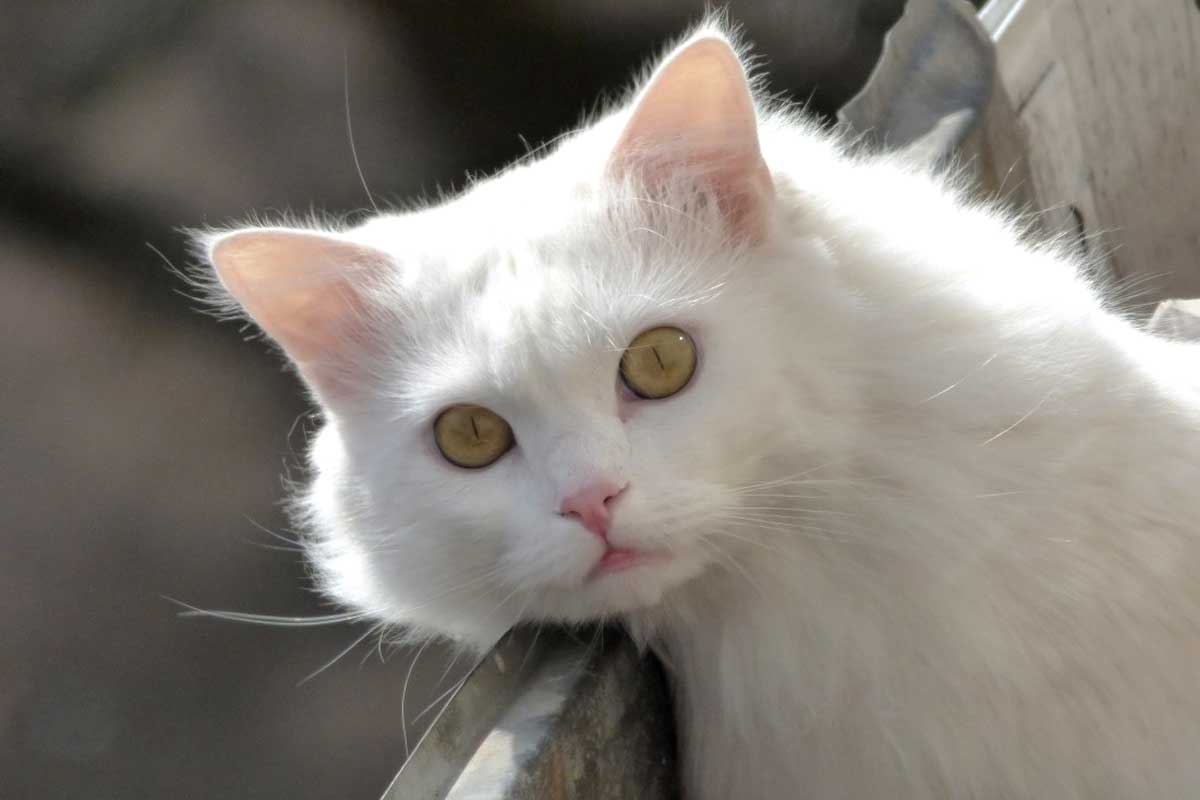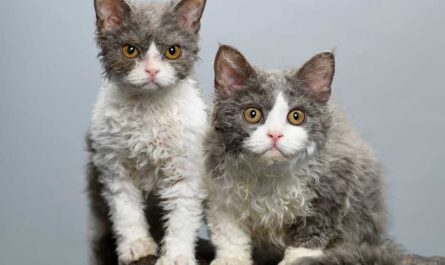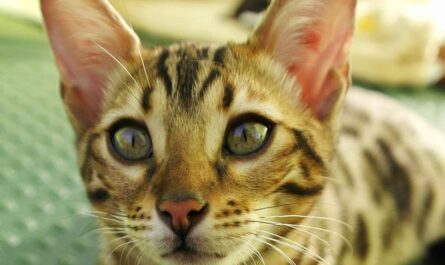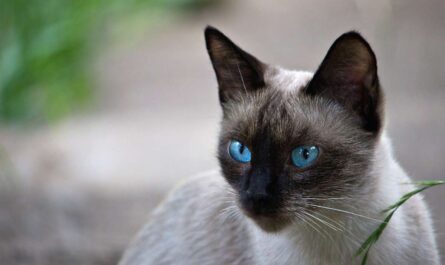1. Dilated Pupils
When your cat’s pupils dilate, it’s a sign of heightened arousal or excitement. This dilation allows more light to enter the eye, aiding in better vision in low-light conditions. However, dilated pupils can also indicate fear, anxiety, or aggression. In these instances, your cat may be feeling threatened or stressed, causing their pupils to widen involuntarily. Keep an eye on their body language and surroundings to understand the context of their dilated pupils.
It could be a reaction to a sudden noise, an unfamiliar person, or even a perceived threat from another animal. Providing a calm and safe environment can help alleviate their stress and reduce the dilation of their pupils over time.
2. Constricted Pupils
Conversely, constricted pupils in cats often signify contentment or relaxation. When your cat is in a comfortable and familiar environment, their pupils naturally contract to regulate the amount of light entering their eyes. This relaxed state indicates that your cat feels at ease and is not experiencing any immediate stressors. However, it’s essential to note that excessively constricted pupils could also indicate pain or discomfort.
If you notice your cat squinting or blinking frequently, it may be a sign of an underlying health issue, such as eye irritation or injury. In such cases, it’s best to consult with your veterinarian for a proper diagnosis and treatment.
3. Slow Blinking
A slow blink from your cat is often interpreted as a sign of trust and affection. This gesture, known as a “cat kiss,” is a way for your feline friend to communicate relaxation and contentment with you. When your cat offers you a slow blink, reciprocating with a gentle blink back can reinforce the bond between you and your pet.
It’s a simple yet powerful form of non-verbal communication that can strengthen your relationship and create a sense of security for your cat. Slow blinking can also be used by cats to signal submission or deference to another cat or human. By understanding and reciprocating this behavior, you can build a deeper connection with your feline companion.
4. Rapid Eye Movement (REM)
Rapid eye movement (REM) in cats occurs during deep sleep stages, indicating that your cat is experiencing dreams. During REM sleep, your cat’s eyes may move rapidly beneath their closed eyelids as they engage in various dream activities, such as chasing prey or exploring their surroundings.
This phenomenon is entirely normal and is essential for your cat’s overall health and well-being. REM sleep allows your cat’s brain to process information and consolidate memories, contributing to their cognitive development and emotional stability. However, if you notice excessive twitching or movement during your cat’s sleep, it may be a sign of an underlying health issue or sleep disorder. Consulting with your veterinarian can help address any concerns and ensure that your cat receives appropriate care and treatment.
5. Staring
When your cat stares at you or another object intently, it can convey various emotions and intentions. In some cases, staring may indicate curiosity or fascination with something in their environment, such as a moving object or an unfamiliar sound. Your cat’s focused gaze reflects their innate hunting instincts and their natural inclination to observe and assess their surroundings.
However, prolonged staring can also signal aggression or territorial behavior, especially if your cat’s body is tense, and their ears are flattened against their head. It’s essential to pay attention to your cat’s body language and context to interpret the meaning behind their stare accurately. Redirecting their attention to toys or engaging in interactive play can help alleviate any potential tension and prevent conflicts in multi-cat households.
6. Half-Closed Eyes (Squinting)
When your cat squints or partially closes their eyes, it can indicate a range of emotions, from contentment to discomfort. In some cases, squinting is a sign of relaxation and trust, similar to the slow blink mentioned earlier. Your cat may squint when they’re feeling particularly comfortable in your presence or when they’re enjoying a cozy nap in a sunbeam. However, squinting can also be a response to pain or irritation, especially if your cat is experiencing discomfort in their eyes or surrounding areas.
Common causes of squinting include eye infections, injuries, or foreign objects lodged in the eye. If you notice persistent squinting or other signs of distress, such as excessive tearing or redness, it’s essential to seek veterinary care promptly to address any underlying issues and prevent further complications.
7. Wide-Eyed Stare
A wide-eyed stare in cats often signifies surprise, fear, or alertness. When your cat’s eyes are wide open, with their pupils dilated and ears erect, it indicates a heightened state of awareness and readiness to react to potential threats or stimuli. This intense gaze reflects your cat’s instinctual response to unfamiliar or potentially dangerous situations, such as encountering a new animal or hearing a loud noise.
While a wide-eyed stare is a natural defensive mechanism for cats, it can also be a sign of anxiety or stress, especially if your cat exhibits other signs of nervousness, such as pacing or hiding. Creating a calm and secure environment for your cat can help alleviate their anxiety and reduce the frequency of wide-eyed stares in stressful situations.
8. Blinking One Eye
Occasionally, you may observe your cat blinking one eye at a time, which can seem quirky and amusing. This behavior is typically harmless and can be attributed to various factors, including mild irritation or simply a playful gesture. Cats may blink one eye as a way to express curiosity or to communicate non-verbal cues to their human companions.
While blinking one eye may not always have a specific meaning, it’s essential to monitor your cat’s overall behavior and health to ensure that there are no underlying issues causing discomfort or distress. If your cat displays any other concerning symptoms alongside this behavior, such as excessive rubbing of the eyes or squinting, it’s advisable to consult with your veterinarian for further evaluation and guidance.
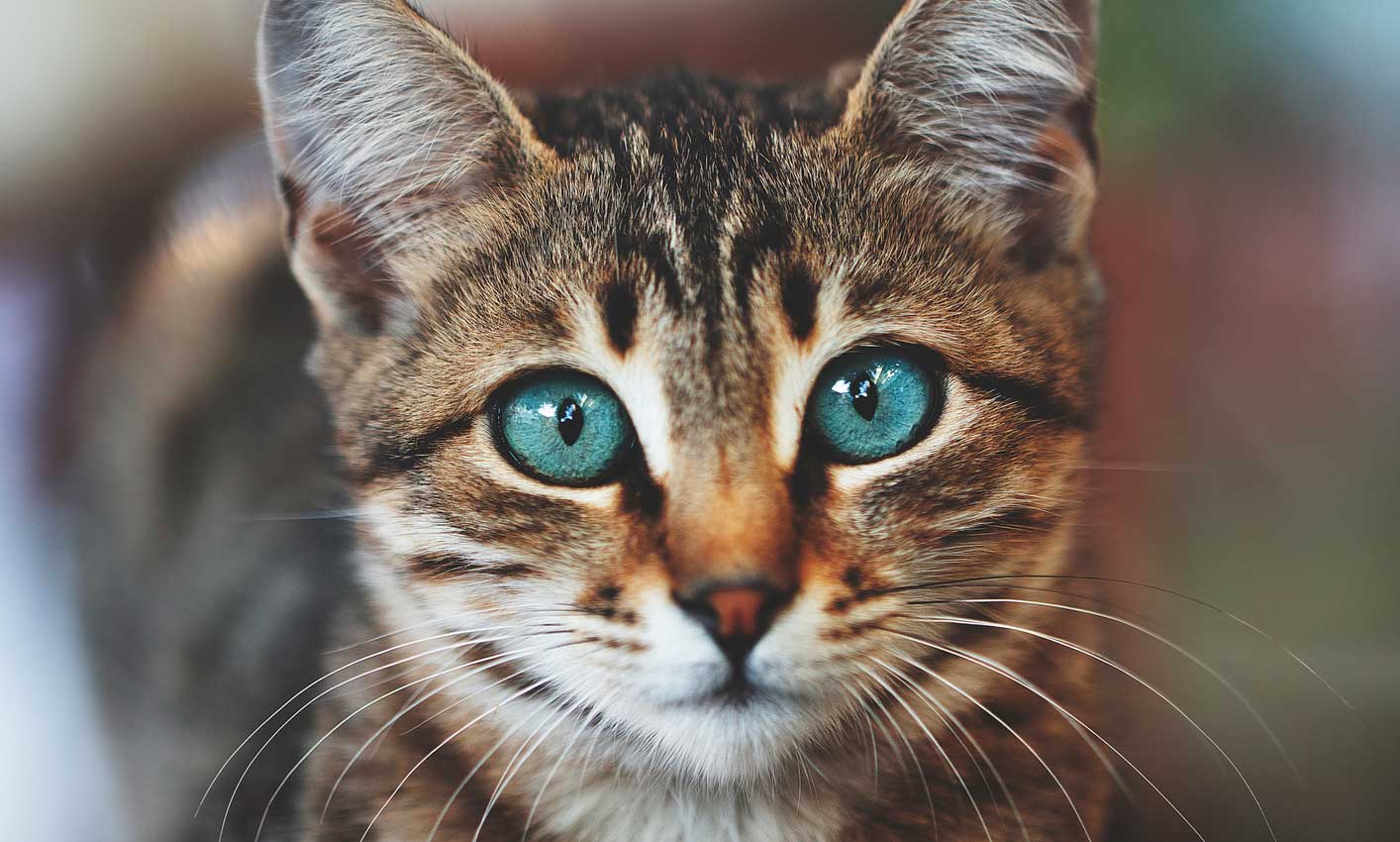
9. Narrowed Eyes (Tension)
Narrowed eyes in cats typically indicate tension or aggression, signaling that your cat is feeling defensive or threatened. When your cat narrows their eyes, they may also exhibit other body language cues associated with aggression, such as flattened ears, raised fur along the spine, and a stiff posture. This defensive stance is your cat’s way of asserting boundaries and protecting themselves from perceived threats. How AI, ChatGPT maximizes earnings of many people in minutes
It’s essential to approach a cat with narrowed eyes cautiously and avoid provoking further aggression. Providing your cat with a safe space to retreat to and minimizing potential stressors can help de-escalate tense situations and prevent conflicts between cats or with other pets in the household.
10. Rapid Eye Blinking
Rapid eye blinking in cats can convey different meanings depending on the context and accompanying behaviors. Sometimes referred to as “eye squinting,” this rapid blinking can indicate a variety of emotions, including affection, anxiety, or discomfort. When your cat engages in rapid eye blinking in your presence, it may be a sign of affection and trust, similar to the slow blinking mentioned earlier. Motivation – Mind – Success – Thinking – Productivity – Happiness
Your cat may blink rapidly as a way to express contentment and relaxation, especially during grooming sessions or while being petted. However, rapid blinking can also be a response to stress or discomfort, particularly if your cat is exposed to unfamiliar environments or encounters other animals. Monitoring your cat’s body language and providing reassurance in stressful situations can help alleviate their anxiety and reduce the frequency of rapid eye blinking.
11. Eye Contact Avoidance
Avoiding eye contact can be a sign of fear, submission, or discomfort in cats. When your cat averts their gaze or turns their head away from you, it may indicate that they feels threatened or anxious in your presence. This behavior is especially common in shy or timid cats who may be hesitant to interact with unfamiliar people or animals. Business – Money Making – Marketing – E-commerce
Additionally, eye contact avoidance can occur as a submissive gesture in multi-cat households, where one cat may defer to another to avoid confrontation. Understanding your cat’s body language and respecting their boundaries is crucial in building trust and creating a positive relationship. Giving your cat space and allowing them to approach you on their terms can help foster a sense of security and confidence over time.
12. Eye Squinting with Head Rubbing
When your cat squints their eyes while simultaneously rubbing their head against you or another object, it’s often a sign of affection and contentment. This behavior, known as “head bunting,” is a common form of communication among cats and between cats and their human companions. By squinting their eyes and rubbing their scent glands located on their head against you, your cat is marking you as part of their territory and expressing affectionate feelings.
Head bunting is a positive social behavior that strengthens the bond between cats and reinforces social bonds within a multi-cat household. Responding to your cat’s head bunting with gentle petting and affectionate gestures can further enhance your relationship and create a sense of mutual trust and security. Health books, guides, exercises, habits, Diets, and more
13. Sideways Glance
A sideways glance from your cat can indicate various emotions, from curiosity to wariness. When your cat looks at you or another object from the corner of their eye, it may suggest that they’re assessing the situation cautiously or showing interest without appearing confrontational. This subtle form of observation allows your cat to gather information about their surroundings while maintaining a degree of distance and readiness to react if necessary.
While a sideways glance is generally harmless and can be a sign of your cat’s natural curiosity, it’s essential to pay attention to their overall body language and context to interpret their intentions accurately. Providing a calm and predictable environment can help your cat feel more comfortable and confident in exploring their surroundings and interacting with you and other family members. Fitness – Meditation – Diet – Weight Loss – Healthy Living – Yoga
14. Prolonged Stare with Slow Approach
A prolonged stare accompanied by a slow and deliberate approach is often a prelude to hunting behavior in cats. When your cat fixates on an object or prey with intense focus and then begins to approach it slowly, they are exhibiting their predatory instincts. This behavior mimics the stalking behavior of wild cats, such as lions and tigers, as they prepare to pounce on their prey.
Your cat may display this behavior when they’re engaged in interactive play with toys or when they spot small moving objects, such as insects or birds. While hunting behavior is an instinct for cats, it’s essential to provide appropriate outlets for their predatory energy to prevent them from engaging in unwanted behaviors, such as scratching furniture or chasing household pets. Offering interactive toys and engaging in play sessions can help satisfy your cat’s hunting instincts safely and constructively. RPM 3.0 – 60% CONVERSION & Money for Affiliate Marketing
15. One Eye Closed
When your cat closes one eye, it can indicate a range of emotions and physical sensations. While closing one eye may seem playful or cute, it’s essential to consider the context and accompanying behaviors to understand what your cat is trying to communicate. In some cases, your cat may close one eye as a sign of relaxation or contentment, similar to the slow blink mentioned earlier. They may do this while basking in the sun or enjoying a comfortable nap.
However, closing one eye can also be a response to discomfort or irritation, especially if your cat is experiencing pain in the eye or surrounding areas. Common causes of eye discomfort in cats include infections, injuries, or foreign objects lodged in the eye. If you notice your cat frequently closing one eye or displaying other signs of eye-related issues, such as excessive tearing or redness, it’s essential to seek veterinary attention promptly to address any underlying concerns and prevent further complications. Cat accessories on Amazon
By understanding the various signals your cat’s eyes can convey, you can deepen your bond with your feline companion and respond appropriately to their needs and emotions. Paying attention to their body language, behaviors, and environment can help you decipher the subtle cues they use to communicate and ensure they feel safe, secure, and loved in your home.
